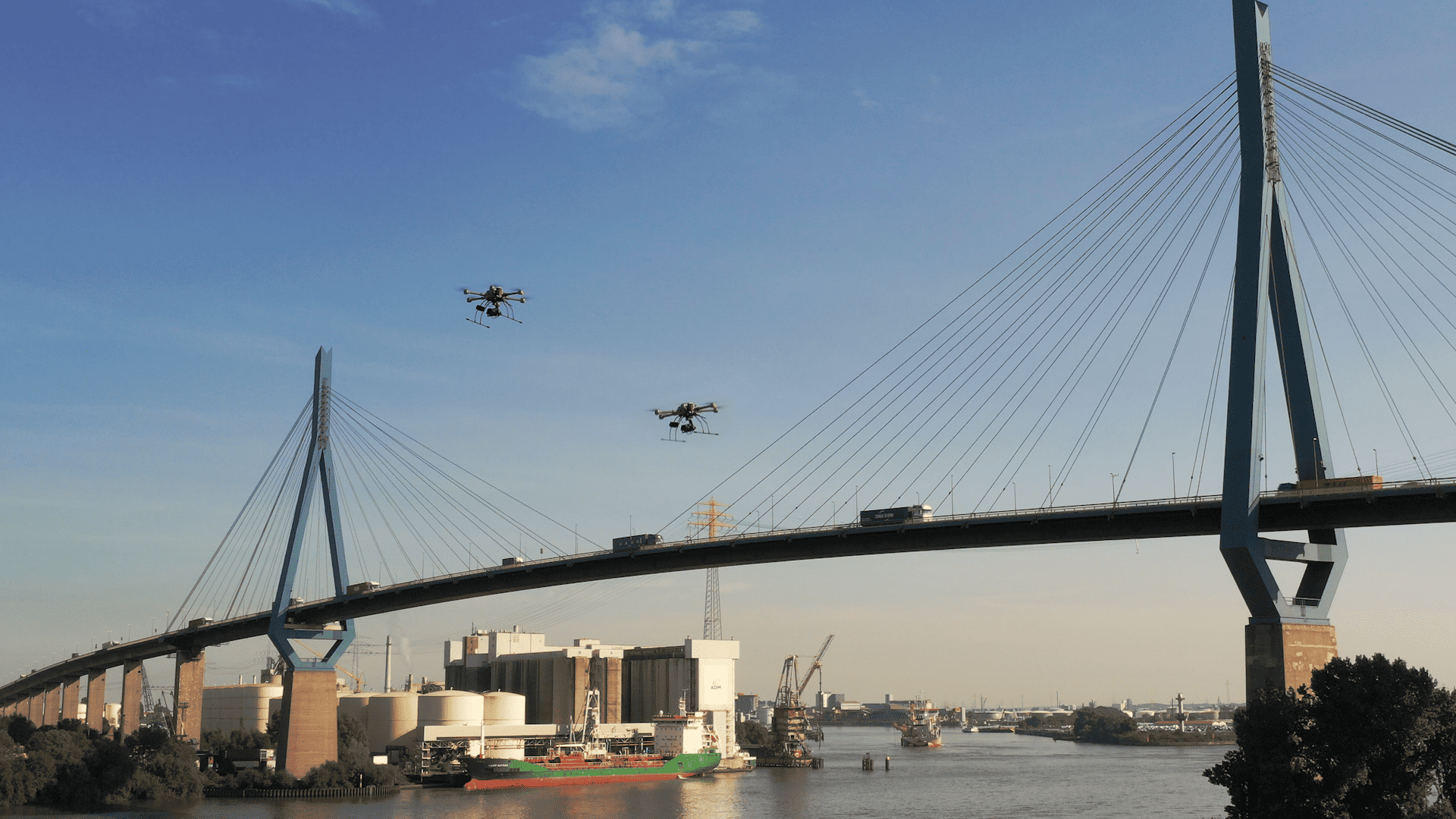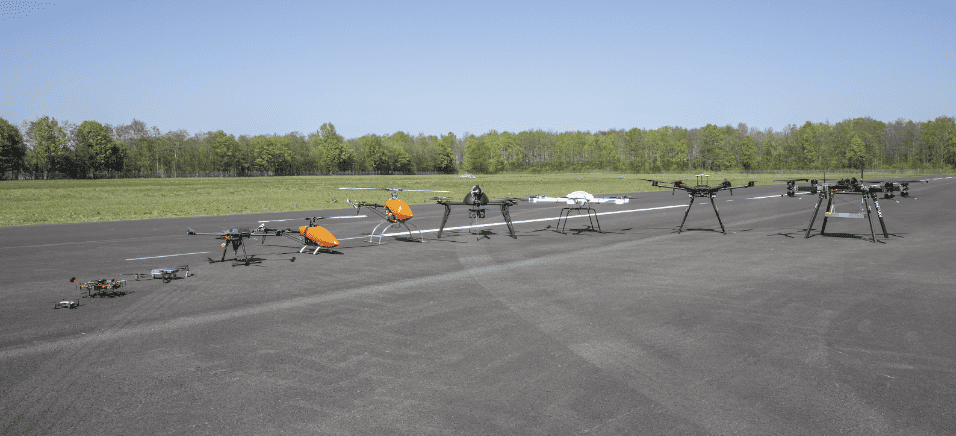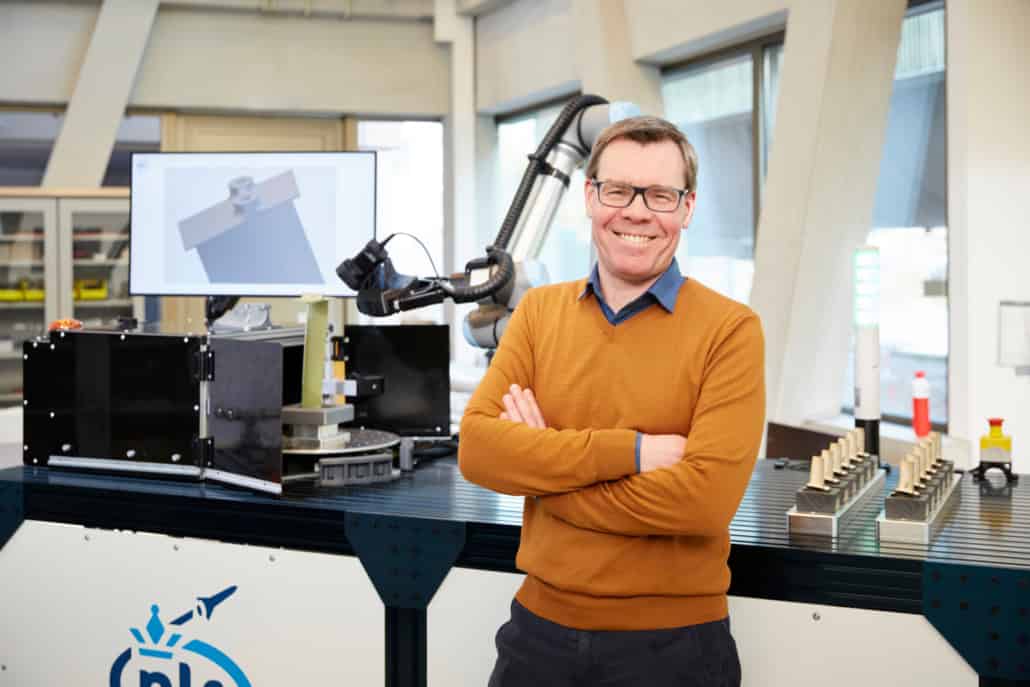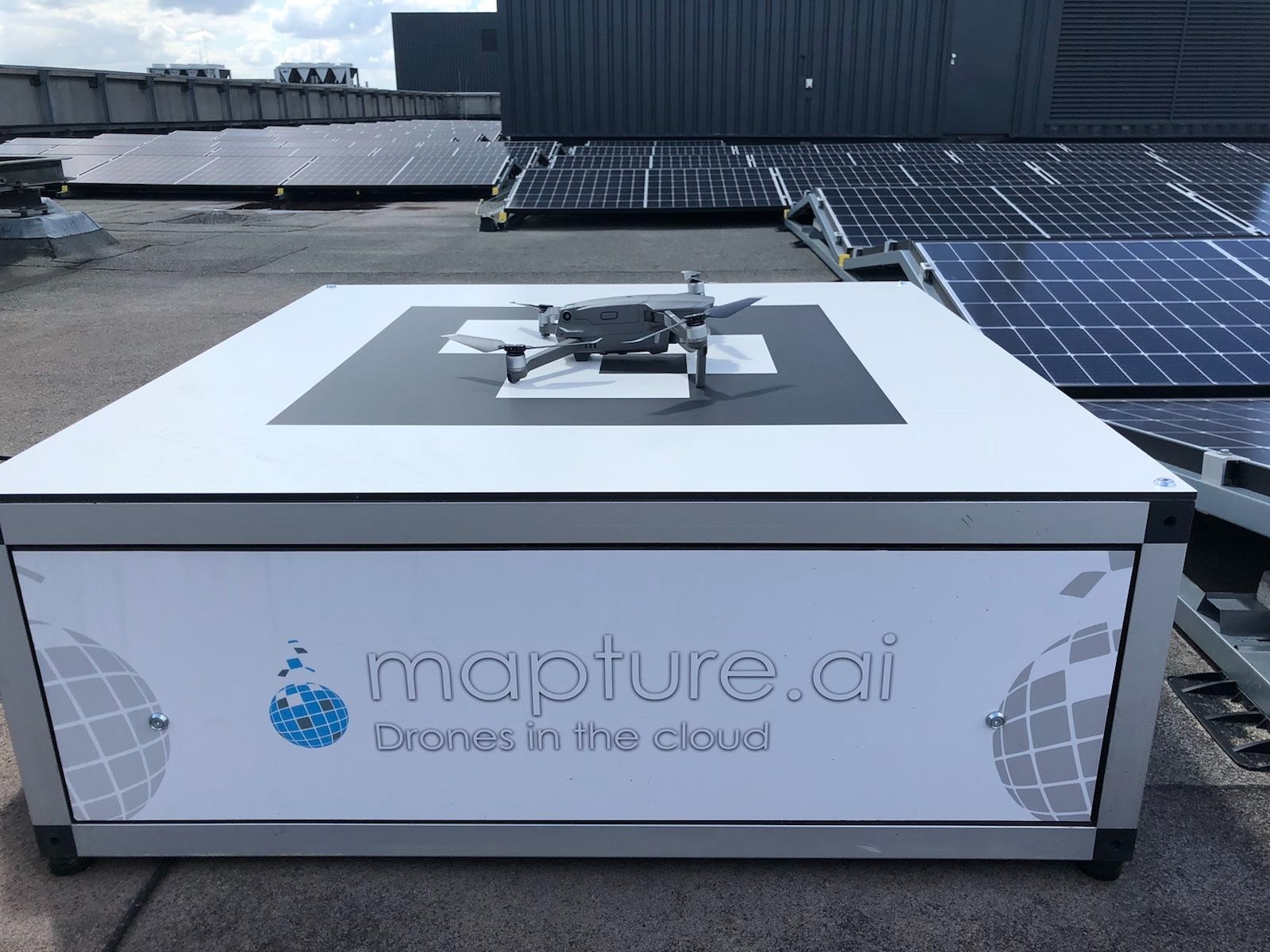
Delivering goods, carrying medical equipment, or scanning buildings for predictive maintenance, drones’ use cases have endless possibilities. Technologies and applications are here, thus thinking about Urban Air Mobility – UAM – ecosystems is the following step to integrating drones into society. That’s what Flying Forward 2020 – FF2020 – is doing.
FF2020 is a European collaborative research project developing a new UAM standard, complying with the Digital Government Transformation of countries. Ultimately, the focus is to incorporate such an ecosystem into the geospatial data infrastructure of cities. The program kicked off in December 2020 and will run until November 2023, testing operations in 5 living labs.
Among them, the High Tech Campus Eindhoven – HTCE – was the first one to start with the pilots and to present the first results of its research. They showcased simultaneously three use cases with the presence of all partners involved and the media. This way, they gave a sneak preview of what we can expect to experience in the near future.
“I’m happy with the result of what we showed today, but we have even higher ambitions,” told Innovation Origins Ted van Hoof. He’s HTCE’s Urban Air Mobility Project Manager.
Building maintenance and last-mile delivery
Tests at the HTCE will keep going until September. Then pilots will start in Milan’s field lab. All the labs involved share the acquired knowledge to improve test conducting in the different stages of the program.
HTCE living lab experimented with five drones’ use cases. For instance, UAVs were used for building maintenance purposes. Through their cameras, aircraft can scan the facades of a building to check on dwellings’ condition.
“Using drones for this purpose is nothing new, companies deployed them for inspecting church towers. Our commercial application is autonomous, the aircraft can fly there, scan the building, and upload the images to the software system,” explains Van Hoof.
Through the drone service platform developed within the project, every mission can be planned to the meter. Firstly, the flying area is outlined – marking no-fly zones is possible too. Secondly, it’s time for mapping out the drone’s flying route. Then the mission can start.
The same happens for the three tested delivery use cases: food, goods, and AED equipment delivery. In those cases, the aircraft travels from its docking station to the delivery point. Once the mission is completed – to improve safety – the aircraft scans a QR code on the ground, landing on it.
Improving security
Sensors and detection cameras are all over the campus and send their information to the control system. With regard to this, detecting infrastructure comes in handy for another use case tested at the HTCE: security. As a potential emergency is detected, the drone system is alerted. An unmanned aerial vehicle will fly to where the sensor is to check on the situation and to send images to the campus security.
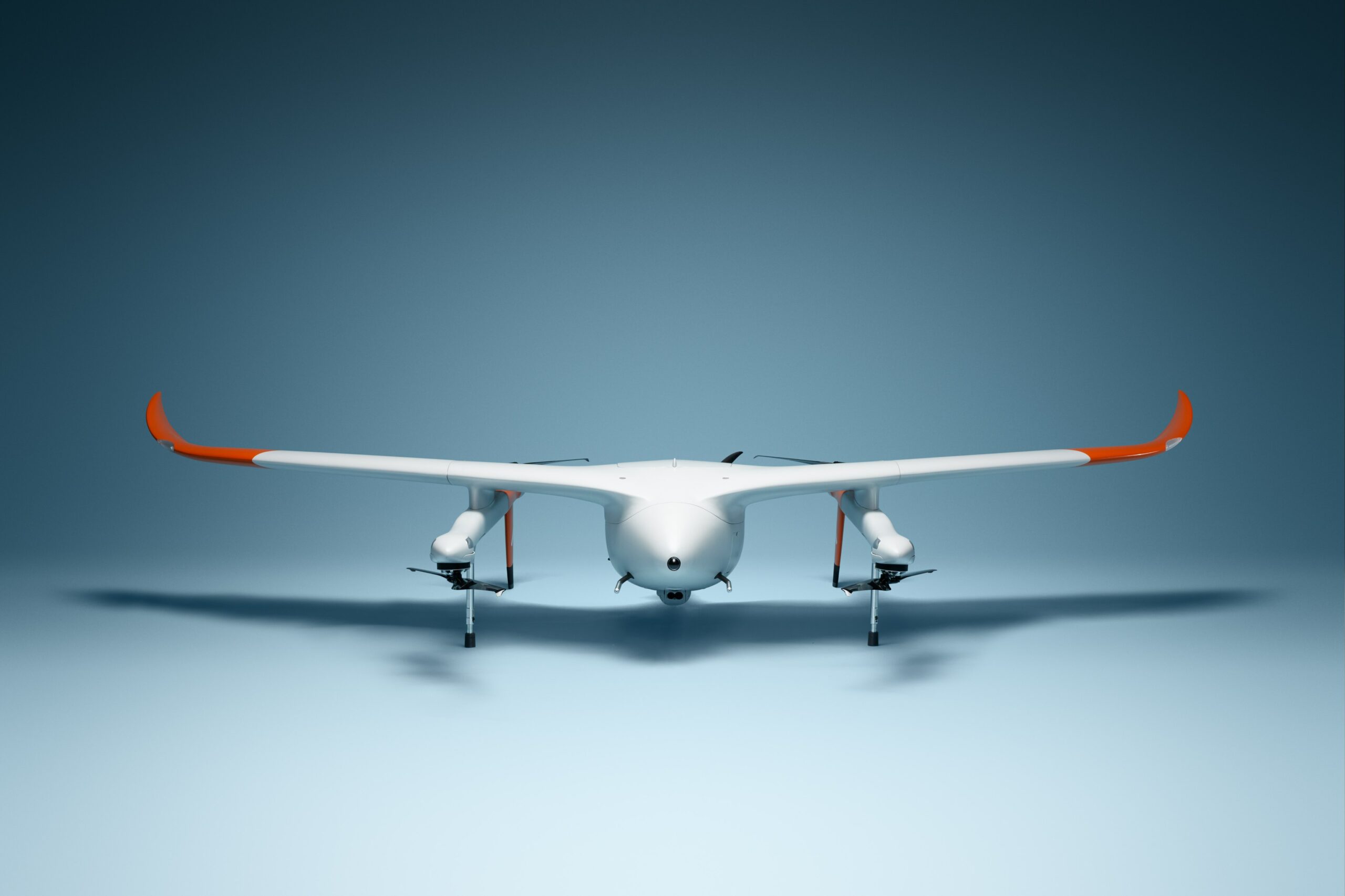
Van Hoof: “This application is, in my opinion, the one with the highest potential. Here at the HTCE, the drone platform is connected to the sensors. Undoubtedly, this application needs to be tailored – adjusting cameras to the right angles – but I’d say this is the low-hanging fruit.”
Living lab
Being a living lab is something the HTCE is aspiring to become more and more. “On one hand, we can help the existing ecosystem accelerate technology and innovations. On the other, we can work on optimizing the services we can offer within the campus,” states Paul van Son, Innovation Manager of the High Tech Campus.
To this extent, integrating drones into the campus can help HTCE step forward and accelerate towards carbon neutrality. FF2020’s pillars are indeed designing resilient, sustainable, and people’s cities. In such a process, social acceptance is not a topic the initiators can shy away from.
Task matters
“In January we sent a survey to all campus residents to get their opinion on having drones flying around. Most of them gave us positive feedback,” notes Van Hoof. A second analysis will start in the coming weeks too.
Van Hoof: “Several studies suggest that if there is a random drone hovering in front of your window, you’re probably not going to like it. If it is an ambulance-like striped one, with a siren on top, and carrying an AED box, no one is going to complain.”
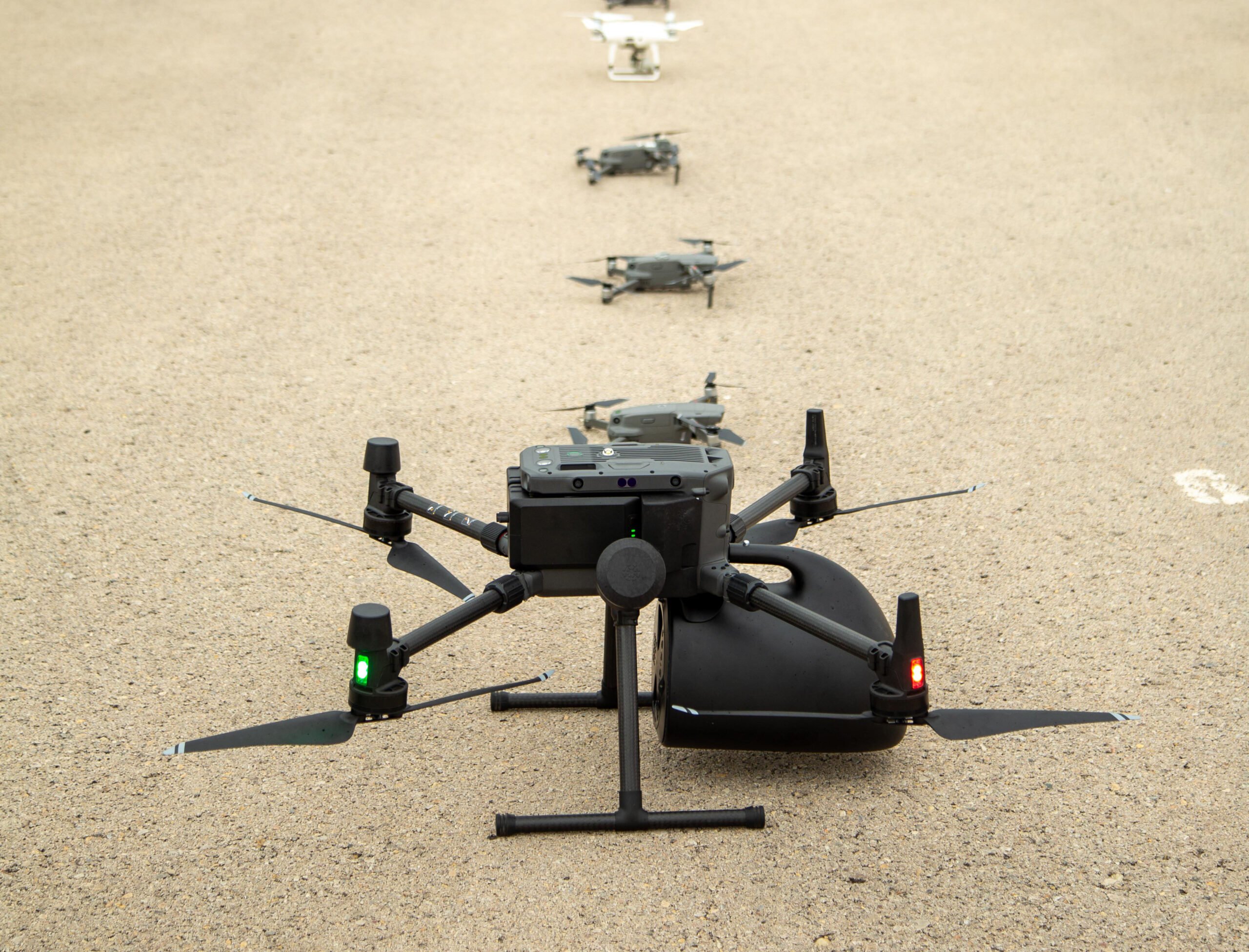
What task the drone is fulfilling helps integrate them into society. Beyond question, the way they perform the operations also matters. Making them fly high enough that they can be barely noticed and making sure that they take off and land straight on the ground.
Technology is not missing, framework is. To have that ready, further testing will be in place, while authorities will outline the guidelines for safe drone flying in urban space. Sooner or later, the pair of shoes you ordered online, will be delivered to your doorstep by a drone.




